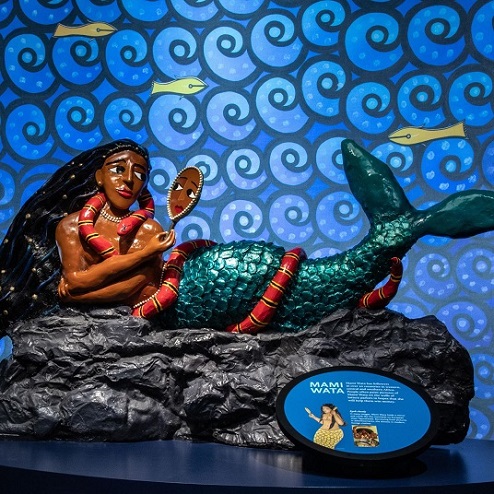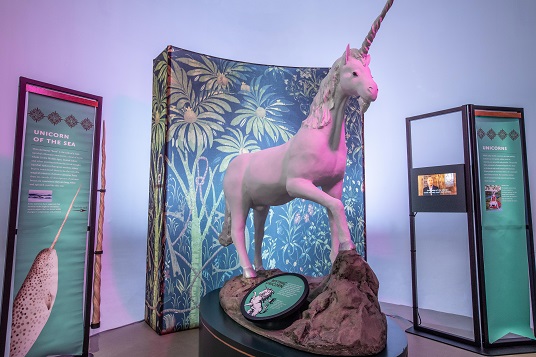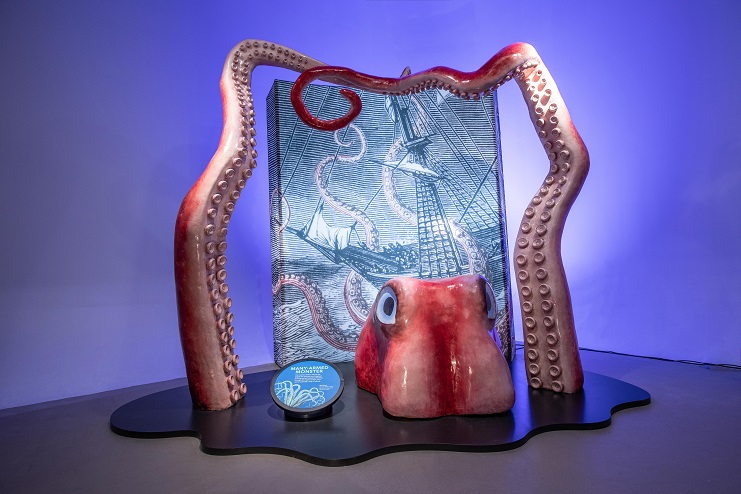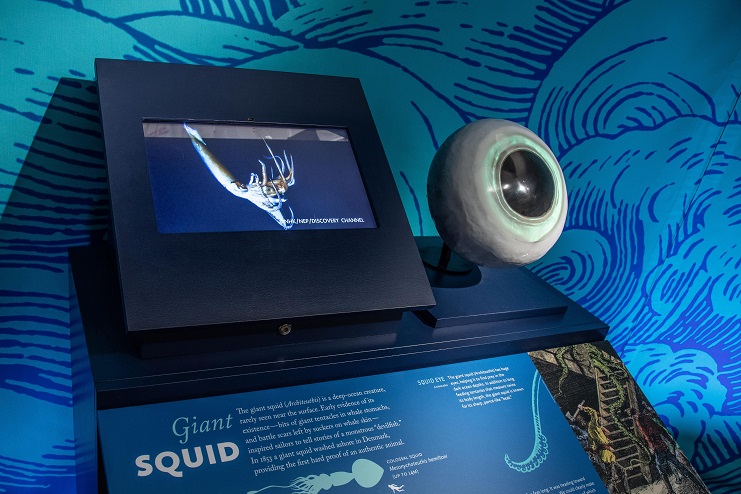
About the Exhibit
For thousands of years, humans around the world have brought mythic creatures to life in stories, music, and works of art. Some of these creatures symbolize danger – others promise to bring luck or joy. Uncover the origins and significance of legendary creatures of the air, land, and water such as sea monsters, mermaids, unicorns, griffins, dragons, and more to see how they give shape to humankind’s greatest hopes and fears and most passionate dreams.
Organized by the American Museum of Natural History in New York, Giants, Dragons & Unicorns: The World of Mythic Creatures features unique cultural objects to highlight the surprising similarities and differences in the ways people around the world envision and depict mythic creatures. The exhibition includes models and cast fossils of prehistoric animals to investigate how they could have – through misidentification, speculation, fear, or imagination – inspired the development of several legendary creatures. For example, visitors will discover how narwhal tusks were believed to be magical remnants of unicorn horns, how dinosaur fossils may have been mistaken for the remains of griffins, and how tales of sea monsters may simply have been fisherman’s tales of real creatures such as the oarfish and giant squid.
Exhibition highlights include a stunning vibrant sculpture of the African water spirit Mami Wata; a replica “Feejee mermaid,” of the type made famous by showman P. T. Barnum, created by sewing the head and torso of a monkey to the tail of a fish; a “life-size” model of a European unicorn; and a dramatic model of a kraken, whose tentacles appear to rise out of the floor as if surfacing from the sea.
Do not miss the interactive stations and artifacts unveiling these mythical wonders' secrets. This enchanting journey offers numerous interactive stations throughout the exhibition. Visitors are invited to participate in activities like rearranging scale models of mammoth bones to look like a giant human skeleton. In an engaging digital interactive, visitors can build their own dragon and watch as it comes alive in a virtual environment. The exhibition also includes several video interviews with experts in various fields discussing the significance of mythical creatures and their possible real-life counterparts.


Unicorn
Some creatures look like familiar animals but have extraordinary and magical powers, such as the European unicorn, a horse with a magical horn thought to counteract poisons, and the Asian unicorn, which is depicted with one or multiple flesh-covered horns. Here we see a “life-size” model of a majestic European unicorn.
Kraken
When European explorers set out on voyages of discovery in the 1400s and 1500s, they were sailing into uncharted waters. Sailors told of a sea monster called the kraken that could toss ships into the air with its many long arms. Today we know such monsters aren’t real. But a living sea animal, the giant squid, has 10 arms and can grow longer than a school bus. This kraken, a mythical sea monster, has enormous tentacles that appear to rise out of the floor as if surfacing from the sea. This digital interactive station demonstrates how real marine animals could be mistaken for mythical sea monsters.
Giant Squid
The giant squid (Architeuthis) is a deep-ocean creature, rarely seen near the surface. Early evidence of its existence—bits of giant tentacles in whale stomachs, and battle scars left by suckers on whale skin—inspired sailors to tell stories of a monstrous “devilfish.” The giant squid has huge eyes, helping it to find prey in the dark ocean depths.
Organized by the American Museum of Natural History, New York (amnh.org)


